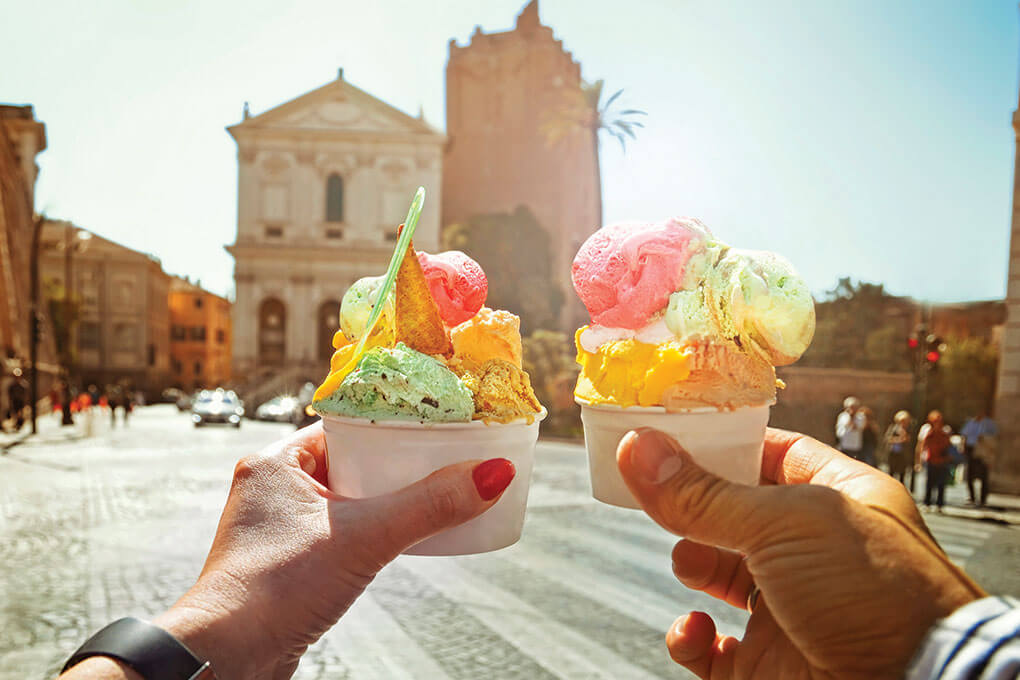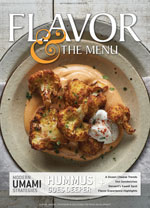
Ten or more years ago, influencing consumer preferences was relatively easy for both manufacturers and operators. Television, films and print could sway consumer likes and demands. Other influences have always been at play beyond these, but they were more limited in their reach and more niche in their impact.
The same cannot be said today. Influences in food and beverage preferences come from a broad and diverse array of sources, including travel, fashion, beauty and, of course, social media. As the reach of these sources expands and intensifies, shifting consumer behavior will change the degree to which each impacts the industry.
Along the way, there will be changes in how best to communicate with consumers, particularly specific age cohorts. Keeping on top of the constantly shifting influencer platforms is critical to cementing future relevance and competitive positioning.
Visuals: Static to Dynamic
One of the primary sensory experiences of food and beverages is visual. If visual appeal wasn’t critical, then no operation would bother with the careful construction of beautiful dishes. Instagram capitalizes on this, and the success of its integration into foodservice is evident in the proliferation of the term “Instagrammability” regarding dishes and drinks.
While static images will continue influencing consumer preferences, the tide is shifting to more dynamic visuals. Younger consumers, particularly Gen Z, lean on YouTube more than any other age cohort. In fact, Gen Z uses YouTube to research brands at twice the rate Millennials do, according to The Superfan Company. Another study by Defy Media reports that 95 percent of Gen Z use YouTube versus 69 percent that use Instagram. Of those using each of these platforms, half “can’t live without” YouTube, while only 9 percent say the same about Instagram.
Think of this as the return swing of the pendulum, which moved away from static images in the 1950s with the rapid spread of television, and then went back to static images thanks to social media. Now YouTube is marking a return to dynamic visual communication. To put this in context: The “snap, crackle and pop” of Rice Krispies could never have worked in the age of Instagram.
As a result, marketing will need to include more dynamic elements such as movement and sound. This dynamism in communication will open opportunities for new techniques, visual elements and plating that are more impactful than static visuals.

Streaming New Food Preferences
Televisions haven’t disappeared from the American domestic landscape, but their use has changed dramatically. According to 2018 research by Deloitte, 55 percent of American households subscribe to at least one streaming service—an increase of 12 percent since 2017. Netflix alone features more than 100 foreign-language series in its library.
Why is this important, and how can it impact food preferences? One critical aspect is that these series were developed for foreign audiences, not tailored for U.S. viewers. They include casual inclusions of food and beverage culture that illustrate the everyday lives of people outside of this country.
Watching these shows naturally opens up American audiences to culinary traditions in a way that restaurants based here may not be able to. Some of the top foreign-language series on Netflix hail from Norway, Israel, Brazil, India, Taiwan, Korea and Mexico—the origins of some of the most on-trend cuisines impacting foodservice in this country.
As Americans become increasingly comfortable with foreign programming, and these series proliferate, expect the comfort level with unfamiliar cuisines, dishes and ingredients to grow.
The Link Between Beauty and Food
Tying food preferences to beauty trends may seem a bit far-fetched, but consider some of the trendiest beauty products over the past few years. Many of them have coincided with or even helped drive food trends, including blueberries, watermelon, cucumber and turmeric. Which came first, and what industry has the greatest influence over the other? It’s difficult to tell.
However, there have been some clear successes in this beauty to food trend. Most notably, activated charcoal was an ingredient in beauty products well before it became the hot new ingredient in food. Cannabidiol (CBD) is growing at exponential rates in all types of beauty products and is poised to enter the food and beverage industry at both the foodservice and retail levels, as states and the federal government work out its regulation. Even moringa and kiwi are looking like they’ll have big years in beauty, which will probably be followed by some degree of trend in food.
Understanding the relationship between these two disparate industries is challenging. But with the growth of functional foods and the deepening understanding of the link between food and well-being, which includes outer as well as inner health, expect trends to move fluidly between the two, with plenty of influence moving in both directions.

Globetrotting to New Food Experiences
While foreign-language series and films may educate armchair travelers, nothing ultimately beats the real thing. The real thing is exactly what more and more Americans are getting, with record numbers now traveling abroad annually. In 2017, based on United Nations World Tourism Organization data, Americans ranked second only to China in outbound travel, with spending in overseas tourism soaring to $135 billion.
Much of this travel is increasingly focused on experiential tourism, driven largely by Millennials, in which travelers are more thoroughly immersed in the culture. Food is often a large part of this, with food-focused tourism on the rise. Market research company Technavio expects culinary tourism to post a compound annual growth rate of more than 9 percent from 2019 to 2023. This includes everything from agritourism to high-end culinary tours.
While some of this travel may be carefully curated for American tourists, much of it will be immersive in a more authentic sense. The result for operators back home is an increasingly educated, experimental and experienced set of customers.
All of this travel is adding to the sense that the world is shrinking, and culinary tourism will serve to accelerate an already warp-speed trend cycle of world cuisine dishes, preparations and ingredients.
Addressing Shifting Influences
Teasing out the most appropriate, actionable and realistic solution for dealing with these new influences will vary widely by operator. Three solutions to consider:
1. Create Doable Social Media Plans
Preoccupation with social media can rapidly become a hole down which a brand sinks, never to return. The time and effort to stay on top of social media often seems to overshadow the primary function of the operation—namely to provide guests with meaningful, memorable food and beverage experiences. Social media, however, is unavoidable in this age, and the platforms that are most relevant are shifting.
Rather than trying to create an engaging presence on all platforms, operators would be well served to identify the platforms that best fit not only the brand identity but the foods and beverages offered.
Ultimately, dynamic platforms will be a far more effective way to reach Gen Z, but the time and effort required to create impactful videos that convey key brand attributes may be beyond the resources available.
Brands must carefully consider options, and develop a plan for the short and long term that maximizes resources, creates an effective communication plan, and fits with strategic goals.
2. Stay on Top of Complementary Industry Trends
Time is precious for operators, but foodservice can no longer assume food and beverage trends exist separately from trends occurring in other industries. From beauty and travel to fashion and media, access to and speed of information coupled with shifting consumer behaviors require brands to stay abreast of much more than just trends specific to their industry.
Operators should identify the industries that make the most sense based on patron demographics and the operation’s identity and focus.
The beauty industry may be more complementary to an operation with a far younger demographic in specific metro areas, while travel or tech may be a closer fit for other brands. Understanding the growing interplay between food and other industries will help operators remain relevant and forward-thinking, and avoid being caught flat-footed in the face of a rapidly shifting trend environment.
3. Identify Trend Synergies
Given the speed of information, it is very easy to get lost in the sheer volume of trends that can be identified. Enter the paradox of choice, or the paralysis one may experience when faced with too many choices. The trick is to understand the themes or the synergies between trends.
One of the world cuisines that has enjoyed a great deal of focus recently is Levantine— cuisines from the countries that make up what has historically been known as the Levant. At the same time, Israeli and Arabic series on Netflix, including “Fauda,” are doing extremely well, and American tourism to the Middle East rose 5 percent in 2018, according to the U.N. World Tourism Organization.
Furthermore, Muslim models are becoming more common in the United States and are featured in high-profile campaigns. This synergy of trends across industries makes it easy to understand the potential for Levantine cuisine in the coming years.
It’s important, always, to take a step back to see the big picture rather than getting bogged down in a barrage of unconnected trends.







